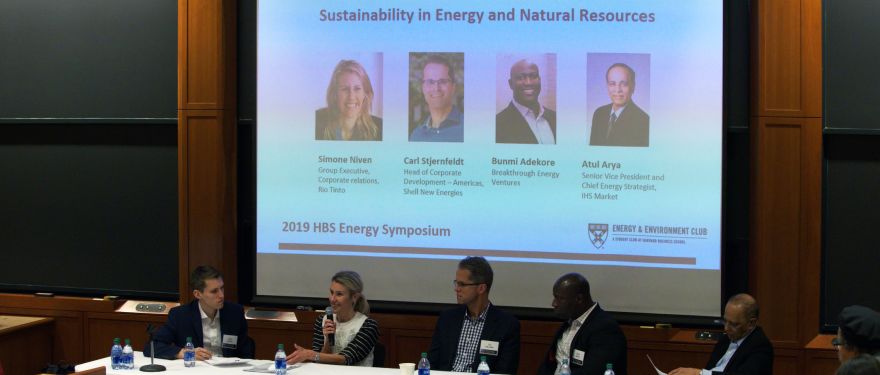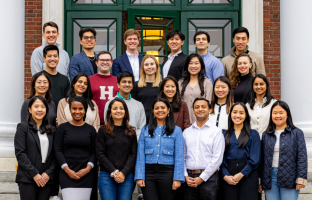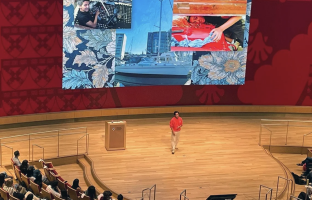How do countries and companies work to achieve their carbon reduction goals? Is a Green New Deal necessary to transform the United States economy? These were just a few of the questions driving discussions at the 16th annual Symposium hosted by the Energy & Environment Club at Harvard Business School.
With a theme of The Power of Business in the Energy Transition, event co-presidents Lori Harrington (HBS 2020) and Nathan Nemon (HBS 2020) gathered more than 300 business leaders, policy makers, and students together for a full day of events to understand how businesses and policy leaders can play critical roles in the energy transformation.
Keynotes from business leaders such as Michael Skelly (MBA 1991), Advisor at Lazard, and Patricia DiOrio, VP of National Grid US Strategy outlined the continued development needed for the US power grid to handle the power currently being delivered from solar and wind farms. Project development of major transmission lines to handle alternative sources must intently focus on stakeholder alignment across public and private sectors to speed project delivery. Both speakers touched on key gaps along the way to the widely publicized 2050 carbon goals. For example, Patricia noted National Grid’s energy assessment, which focused on three key levers to pull along the path to reduced emissions in the US Northeast – (1) continued utility power conversion to alternatives; (2) the electrification of vehicle transportation; and (3) improved heat management systems for buildings.
Tying in a policy perspective, Former US Energy Secretary and MIT Professor emeritus, Dr. Ernest Moniz, presented a perspective of a Green Real Deal that simultaneously must achieve a lower carbon future, while addressing social justice issues. This challenge must be approached with pragmatism, innovation, and broad coalitions in order to deliver the optionality that different countries and regions need to meet aggressive goals. A wide range of technologies must continue to be invested in and developed (ex: from hydrogen/electrolysis storage at scale, to engineered plants with deep root systems), so that businesses and governments across the world can select a mix of approaches that work best for each unique situation. On the social justice side, recent discoveries of large natural gas deposits off the East and West coasts of Africa have the potential to provide cheap, abundant energy to local communities that can simultaneously alleviate poverty while replacing biomass as a fuel source.
Attendees enjoyed balanced perspectives from panelists on topics from sustainability efforts in natural resource firms, to redefining growth through the circular economy. Representatives from resource producers such as RioTinto and Shell discussed their work to engrain sustainable practices in their operations, as well as serve as a source of expertise to execute alternative energy projects at scale. From the venture capital and investor perspective, panelists from firms such as Breakthrough Energy Ventures, Marathon Capital, and FullCycle discussed the need for patient capital to be aligned on the longer timelines it may take for alternative energy investments to fully develop a return. As one example, waste to energy is growing rapidly in emerging markets alongside recovery and recycling of minerals out of these existing waste streams, presenting opportunities for those willing to take a long-term view of value.
The day closed with a case competition featuring budding companies engaged in a wide range of sustainable opportunities, from building a better biodegradable plant pot, to expanding small-scale solar in the Congo, to deploying smarter showerheads for water conservation.
Contact the Energy & Environment Club to partner with their club leaders or connect with over 50 career-related student clubs at Harvard Business School.






.png&w=80&h=80)
